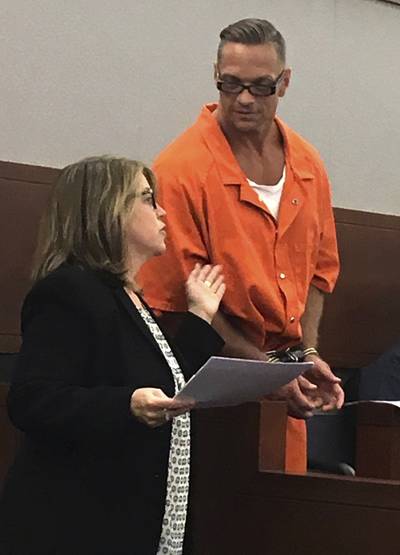Monday, Sept. 4, 2017 | 2 a.m.
Scott Dozier wants to die, and he doesn’t care how.
The 46-year-old convicted killer of two men in their 20s mangled and disposed of the bodies of his victims in 2007, and said as much in letters to Clark County Chief District Judge Jennifer Togliatti and his attorneys in October. Dozier renounced his right to appeal his death sentence after more than nine years on death row in Nevada.
“I’m ready to go,” Dozier told Togliatti during a July 27 hearing.
The problem is that Nevada could not provide a way to execute him. After a stockpile of a sedative (midazolam) and opiate painkiller (hydromorphone) used as two of three narcotics for executions in Nevada expired last summer, the state lacked the means to carry out Dozier’s execution.
While a few of the 30 other states where the death penalty is legal still allow for other methods of capital punishment — like gas, firing squad and electrocution — Nevada law calls only for lethal injection.
But the state’s recent request for proposals to dozens of drug manufacturers for a new supply of the drugs used for execution went without response for the better part of eight months. Pfizer, which produces midazolam and hydromorphone, and other drug companies refused to sell them for capital punishment.
After reaching terms on May 23 with Cardinal Health for a purchase, state officials settled on a new concoction for Dozier: sedative (diazepam), opioid painkiller (fentanyl) and anesthetic (cisatracurium.) The three have never been used before in an execution in the United States.
The change prompted backlash from groups such as the American Civil Liberties Union of Nevada, which has indicated strong opposition to Dozier’s execution despite his requests to be put to death.
“No other state has used a lethal combination like this, and it’s not clear whether this experimental protocol complies with all state and federal laws,” ACLU of Nevada Director Tod Story said. “Nevadans deserve answers on exactly how the state plans to kill a prisoner in its custody.”
A Clark County jury convicted Dozier and sentenced him to death in 2007 for killing 22-year-old Jeremiah Miller at the La Concha Motel, draining Miller’s body of blood in a bathtub and taking $12,000 that Miller had brought from Arizona to buy substances for making meth.
Dozier was also convicted of second-degree murder two years earlier in Phoenix for shooting and killing 26-year-old Jasen Green, stuffing the Green’s body in a plastic container and leaving it in the Arizona desert.
Dozier is scheduled to be put to death Nov. 14 at the recently completed $870,000 execution chamber at Ely State Prison.
He is not the only death row inmate to serve as a guinea pig for a state’s new lethal cocktail recipe this year. On Aug. 24, the state of Florida executed convicted murderer Mark Asay using etomidate, a sedative, in place of midazolam, after also failing to obtain new orders of the drug from its manufacturers.
The time Asay was injected to when he was pronounced dead was no longer than five minutes and had “no complication,” according to Florida authorities.


Join the Discussion:
Check this out for a full explanation of our conversion to the LiveFyre commenting system and instructions on how to sign up for an account.
Full comments policy